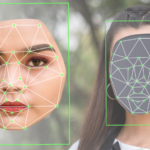As with any new technology there are positives and often more negatives for Māori and other Indigenous Peoples protecting their traditional knowledge from abuse, appropriation and theft.
In the short time that Non Fungible Tokens have been created, traded and advertised online there is a large amount of cultural appropriation and stolen images being transformed into a Non Fungible Tokens and other offensive NTF’s being portrayed as authentic Māori culture.
The following short guidelines are for consumers interested in Māori NFT’s but who do not want to promote cultural appropriation. These warnings are based on my previous article Māori Branding Guidelines.
General Warnings
Before any purchase or trade of a NFT that contains any Māori element, you should do your own research of the company, trader and artists to ensure they are legit. Many Māori NFT’s are simply images from a Google image search, photo’s of others property including museum web sites, or digitised from out of copyright books.
Any Māori NFT’s that are sold outside of New Zealand and are created or traded by Non Māori are likely to be culturally appropriated. It is not uncommon for individual Māori to appropriate Māori culture, so some caution and fact checking of stories, backgrounds as a precaution is urged.
Copyright
Western legislation (Copyright/Patents/TradeMarks) largely do not apply to Traditional Knowledge such as Māori culture. Beliefs of individual property rights are at difference with many Indigenous Peoples, including Māori. Indigenous intellectual property rights are situated in ancient customary law and culture, and based on intergenerational social relationships and responsibilities.
Extreme care must be taken to ensure that the Māori art in the NFT is original and that the developer “does own full legal property rights” if the NFT.
Tiki designs
A general rule of thumb, it is most likely that any Tiki image is either a copy of someone’s treasure or it is cultural appropriation and highly offensive. Tiki is a fertility deity in most Iwi and Māori, including being recognised all over the Pacific. It is also unlikely to be approved if you used a Tiki NFT and applied for a Trade Mark in New Zealand of the image.
Māori Language
Any use of the Māori Language (Official Language of New Zealand) is positive. If purchasing a NFT with any Māori language, you should have it checked by an independent Māori language provider and or check with multiple dictionaries. Two examples of why it is important to check te reo Māori”
- Recently in the media the term ‘huruhuru’ was discussed. It can be used to describe wool, but is also a regional word for ‘pubic hair’.
- The term ‘kūpapa’ appears in the online Te Aka Māori Dictionary with numerous meanings including ‘neutral. The word kūpapa is a common word widely used as a terms of significant disrespect. A NFT that appears to be promoting neutrality with the Māori language could be the opposite.
Current best practice for spelling and writing Māori is contained in Te Taura Whiri i te Reo Māori Guidelines for Māori Language Orthography downloadable from https://www.tetaurawhiri.govt.nz/assets/Uploads/Corporate-docs/Orthographic-conventions/58e52e80e9/Guidelines-for-Maori-Language-Orthography.pdf .
Māori Tattoo’s/Tā moko, Moko Kauae
There is a resurgence of the art of Māori tattoo’s being worn by Māori adults on their body called Tā Moko. Facial tattoos are called a Mataora and for women on their lips and chin the tattoo is called a moko kauae. The styles and the artwork represent a story unique to the individual and often recognises genealogy, life achievements or other unique and personal stories to the wearer and their family.
It is inappropriate to copy another persons Māori designed tattoo or to copy it and make modifications. This rule applies to the living and deceased no matter how old the image is and any perceived copyright timeframes.
The origins and story of a unique Māori tattoo that is applied to a NFT should be discussed with the NFT designer.
Māori Flags
On 14 December 2009, Cabinet recognised the Māori (Tino Rangatiratanga) flag as the preferred national Māori flag. The national Māori flag was developed by members of the group Te Kawariki in 1989. On 6 February 1990, the group unveiled the flag at Waitangi.
While a number of people have claimed ownership and/or rights to the flag, the flag does not belong to any one Individual, whānau, Iwi, Company, Organisation, Religion or Political Party.
The collective who created the flag did ask for the following to be respected with the flag:
- Don’t change the dimensions or colours – it loses its essence
- Don’t wear it around your waist
- The symbol can be used for any kaupapa that promotes, encourages and supports Te Ao Māori and should not be used or sold for personal gain.
There is also another flag that is often used to promote Māori. It is often called the United Tribes Flag. There are two versions of the flag.
Photos
Already a number of NFT that portray Māori are copies of photos and images from out of copyright books and public paintings. This is highly offensive and disrespectful.
Photos of Māori individuals, groups or of any crafts, carvings, taonga etc., without without explicit written permission is likely to have been appropriated.
Stereotypes in original art
A number of Māori artwork and in NFT’s (usually by by non Māori) are incorporating an age old colonial stereotype perpetuated by inferiority and racism and drawing overweight Māori warriors and other pre colonial Māori people. Yet, the evidence tells us pre colonisation, Māori were large athletic built people who apart from their teeth were physically muscular and fit.
Another offensive stereotype depicts Māori on waka voyaging to New Zealand looking very ill, skinny, scared and lost. Māori/Polynesians were expert navigators and brought with them much needed supplies of food, medicine, belongings and even brought new flora and fauna species to New Zealand.
Taonga Species/Indigenous and Native Species
In Māori culture every natural object and Native and Indigenous species (Taonga Species) has traditional knowledge associated with it. Each Taonga Species and natural object has a genealogy and a story of creation. Many Taonga species and objects are used for rituals, medicines, personify something or are a guardian to some Iwi.
Careful consideration of any NFT with a Taonga Species, including names should be considered.
Primary image for this post
The primary image for this post was an advertised Māori NFT for sale online recently. TV1 News did a story about cultural appropriation and used the image as their front image, so I have copied it.
It is clearly supposed to be a Māori, the feathers (poor representation of Hui feathers) suggest a chief. The lines I assume represent a Tā Moko are childish lines of squiggles as is the representation of what looks might be a deformed and off colour (orange) Hei Tiki. The earrings look Opaque gems (not worn by Māori) in place of pounamu stone earrings. The cloak does not look like any genuine Māori cloak. Overall, this image is offensive and appropriates some Māori culture by an amateur artist who has very poor skills.





Leave a Reply